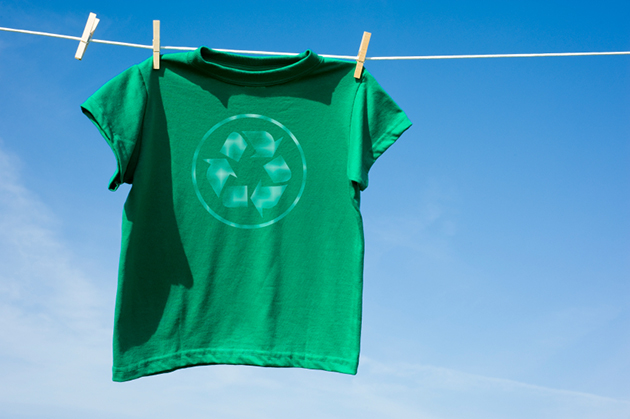 Clothing or textile recycling is the process of reusing and reprocessing used clothing, fabrics and material scraps. Most clothes are 100% recyclable, but approximately 70 pounds of textile material per person are thrown into landfills each year. Only 15% of textiles were actually recovered in 2012, according to the EPA, which only cleared 5% of the space in U.S. landfills.
Learning about recycling clothes can help decrease the serious environmental issues that these items pose when sitting in landfills. Opting to green your clothing is about more than simply recycling your items. Although that is an important eco-choice, purchasing recycled-content clothing can also help significantly decrease the waste that enters landfills.
Clothing or textile recycling is the process of reusing and reprocessing used clothing, fabrics and material scraps. Most clothes are 100% recyclable, but approximately 70 pounds of textile material per person are thrown into landfills each year. Only 15% of textiles were actually recovered in 2012, according to the EPA, which only cleared 5% of the space in U.S. landfills.
Learning about recycling clothes can help decrease the serious environmental issues that these items pose when sitting in landfills. Opting to green your clothing is about more than simply recycling your items. Although that is an important eco-choice, purchasing recycled-content clothing can also help significantly decrease the waste that enters landfills.
So, whether you are hoping to recycle your old wardrobe or plan to purchase recycled content, learning about textile recycling services will help you understand the importance of doing just that. Give your wardrobe a second chance. Recycled clothes can be made into new clothes, new linens and other textiles, and they provide major environmental and economic benefits.
Textile recycling services
Clothing recycling is a huge industry in the U.S., with hopes for it to excel toward zero clothing entering landfills around the country. By utilizing textile-recycling services, you can help save approximately 2.5 billion pounds of clothes from going to waste. There are many new uses that clothing can take on, and most of the fabrics can actually be recycled into another kind of fashionable item. Even if you have deemed your clothing to be too worn to be made into a new fabric, it should still not be discarded into the trash. For example, cotton can be recycled back into various cotton products several times before it is completely spent. Take your clothing to a textile recycling service so that it can recycle your wardrobe into a new one for someone else, or into other fabric products such as carpet, insulation or pillow stuffing.
Environmental benefits of recycling clothes
As you recycle your wardrobe, you will reduce the amount of pesticides and water used to grow and dye new fabrics, while also deterring the potentially toxic dyes and chemicals found in clothing from reaching the soil and becoming a contaminant. As a result, environmental pollutants decrease, while energy consumption, greenhouse gases and volatile organic compounds emissions fall. Necessary landfill space is also minimized through clothing recycling. This is vital because some fabrics do not decompose. For instance, fiber products are not biodegradable. Wool will decompose over time, but it emits methane gas, which contributes to global warming, so there is never a good reason for clothing to be discarded improperly.
Through textile recycling, the need for scarce natural resources such as cotton and wool are also reduced. To date, clothing takes up approximately 126 million cubic yards of landfill space — a significantly high number considering that most clothing is 100% recyclable and that there is a massive demand for secondhand clothing within this country, as well as in developing nations.
Consumer and industry benefits of clothing recycling
Consumers and the fashion industry also benefit from recycling clothes. As mentioned, these items can be sent to developing countries or be provided as secondhand items at more affordable prices. Recycling clothing also creates jobs at charity organizations and other businesses that resell used fabrics. The textile-recycling industry consists of approximately 2,000 companies that provide about 17,000 jobs annually, with gross sales of $700 million each year. The textile recycling process
While some recycled clothing is donated to secondhand stores and charities if deemed to be in good condition, worn-out clothes and material strips are sent to a recycling facility where they are sorted and ripped into tiny strips. The threads are then treated through a chemical process that breaks down the fibers into a liquid, and cotton and viscose are extracted. Cotton is then mixed with polyester fibers and spun into thread while the fiber liquid goes through a manufacturing process that knits, cuts and sews it into new items. With 99% of clothes ending up in landfills, clothes and textiles such as cotton, polyester, nylon and rayon take up 5% of landfill space. Yet, old clothing can be put to good use while decreasing its environmental effects and benefiting consumers and the fashion industry significantly.
So, if you have deemed your wardrobe to be in bad condition, drop your clothes off at a recycling facility. Green fashion just became a lot more important.
To find a clothing recycling location near you, visit our recycling location finder.